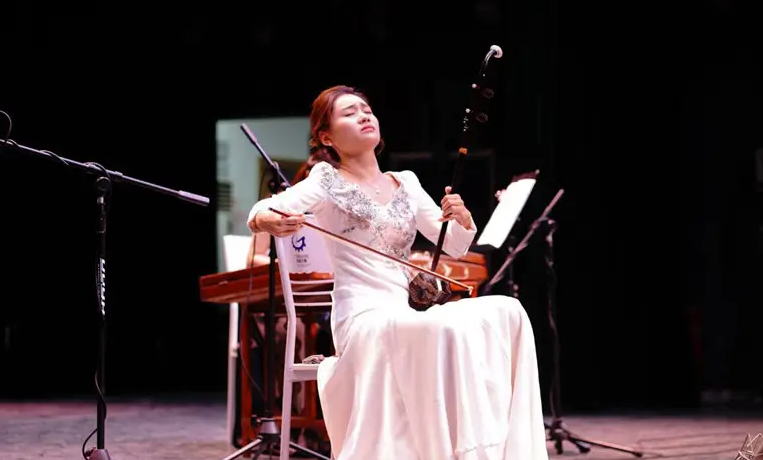Self-taught Erhu how to choose etudes skillfully
When you are frustrated and annoyed that your erhu level is stagnant, you will find the answer - practice the Etude. When you are dazzled by the numerous erhu books on the bookcase, open a vast system project and have no idea where to start, you will ask what to practice? What is the use? In order to enrich the forum and create an atmosphere. Shake out your good experience and share it with everyone. I'll come first.

The pros and cons of Etude
Before the erhu entered the university podium, there was no scientific etude. Liu Tianhua's etude came out, which transplanted the scientific training of the violin to the erhu. With the development of the era, erhu music has been enriched and developed by famous masters such as Wang Guotong, Zhao Yanchen and Liu Changfu. The etude has been systematic, scientific and self-contained. Do middle-aged and elderly Hu You want to practice systematically? Some people say that many folk artists do not have systematic training in etudes, and they still play erhu like crazy. No need to practice. Let’s first analyze their pros and cons here.
Pros: As a necessary means of step-by-step progress; stability, science, and continuity are the deep needles in the sea; a good recipe for rushing to level up.
Disadvantages: time-consuming; boring and fading interest; no chance for the hero behind the scenes to express; the melodic training is relatively blank.
Therefore, it is necessary not to practice without practice, not to practice fully, to practice a lot, to focus on one thing and lose another, to overwhelm guests, and to be useless. Somebody plays the etude better than the solo. If you don’t practice, the number of paths is too wild, the blanks are incomplete, and you can’t go to high levels.
2. Selected Etude
It depends on your level and your time. The etudes are divided into:
1. Skills
This kind of music will help you master all kinds of left and right hand hits, vibrato, glissando, fast and slow bows, skip bows, string changing exercises, etc. They are over-the-top, bridges can be demolished after crossing the river, there is no need or possible to remember them. For beginners, you can choose a paragraph from various exercises. Don't cover everything, and the book should be thinner and thinner. Hu You, who has a little foundation, can take what he lacks to make up for what he lacks, and he doesn't have to make up for it completely, which is time-consuming and brain-injuring. I advocate entering the fast bow practice early, because after you have two or three months of Hu Ling, the development of the left hand and the bowing and stringing of the right hand can be covered. Slow down as a scale, skilled practice, fast and fast bow will come naturally. Intervene in advance on driving the erhu. Do more with less. Wang Guotong's fast bow practice is more comprehensive. But there is a premise that the slow bow must be pulled from the root to the tail of the bow, that is, the left hand pressing the string, the hand shape is correct, each finger of the right hand, and the wrist and arm are serving correctly. It doesn't take much time to solidify in the same fast bow practice.
2. Tone class
This kind of practice is to raise a level, in the case of preliminary mastery of various skills, intonation is an eternal problem. It is easy to make two types of mistakes; one is ignorance. That is to say, the scale of the scale, especially the high-pitched area is the Great Northern Wilderness, and I rarely read it, so I don't make mistakes. Right is an occasional thing. For this kind of mistakes, choose "practice in each key", especially the treble practice of A, C, and B flat, which are usually relatively unfamiliar; the second is to know and slip. Eight times out of ten, it is right, the first time is unsuccessful, and it can be reset after two or three times. This requires more practice, and the best evidence is to wear Yang with a hundred steps, and wear the oil with copper coins from the oil seller. Of course, there is a method problem, such as how to jump from the mid-tone 5 to the high-pitched 5 in the first sentence of backgammon. It is 3, and a slip is 5, stable and accurate. The result is a bridge of 153. But the most important thing is the state of mind. Those who are impetuous and acute must have a high error rate. At this time, it is easy to understand that the masters are humble and sincere about self-cultivation.
3. Paving
This kind of etude is a comprehensive type, the main function is to live before the performance, to open the way before practicing the piano, to attack the nodes of the solo music, etc. For this type of repertoire, choose famous classics, which are nice and easy to remember, such as Zhao Yanchen 155255, Wang Guotong 12311, etc.
3. Clever use of alternatives
Since etudes are to improve skills and prepare for solo, why not use different levels of solos and ditties that are not ready to be played (you can't finish them in a lifetime) as etudes, which is pleasant and time-saving.
Longbow: Introduction to Rivers and Water, Adagio of a Flower
One bow with multiple sounds: Jiangnan Spring, Depressed Vomiting
Treble: Spring Kuaibong, Liang Zhu treble part,
Chromatic Exercises: Bumblebee, Endless Parts
Jumping Bows: Hora, Childas
Strength: empty mountain bird language
Each of Zhu Changyue's folk songs is about the fourth grade, which can be practiced as an etude.
Lianton Bow: Liuyang River
Kuaigong: Guests from afar, Jasmine, Yangliuqing, etc. Three madness is also a good practice.
Passion: Alam Khan, beautiful girl
Playing: Gangnam Melody
Pad Finger: Yangzhou Minor
Vibration Variation: Small River Flows
 渝公网安备 50010702504639号
渝公网安备 50010702504639号